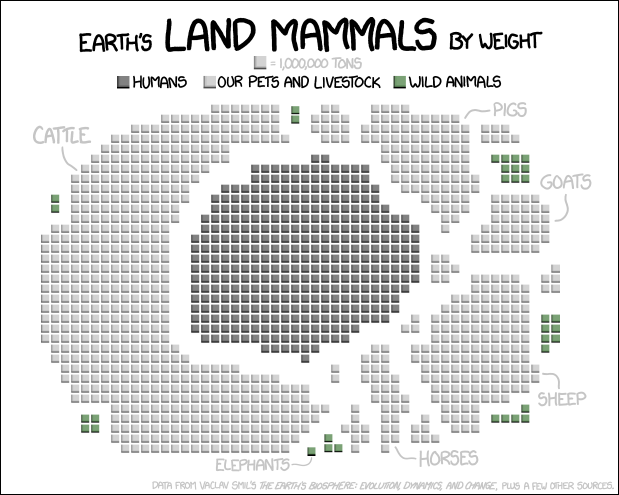When I was a young girl I used to sit in my mom's strawberry patch and devour the strawberries. In high school I worked at a strawberry patch for a few summers as a picker in the morning and sales in the afternoon. I also consumed a bit of strawberries (and strawberry shortcake and strawberry smoothies!) there.
Now I have my own strawberry patch. And yes, I still sit in the middle of the patch and eat strawberries. Lots of them.
I have grown to know my habits though, so I have planted a big enough batch to support my in patch strawberry eating, to supply fresh strawberries for my kids to enjoy, and to have extras to preserve.
 Strawberry season is now over, but for about 2 1/2 - 3 weeks, weather pending, I bring in a batch of strawberries like the ones pictured here every other day. (Not pictured are the cups of strawberries that I have eaten in the patch that day.) The best thing is that my patch is still expanding!
Strawberry season is now over, but for about 2 1/2 - 3 weeks, weather pending, I bring in a batch of strawberries like the ones pictured here every other day. (Not pictured are the cups of strawberries that I have eaten in the patch that day.) The best thing is that my patch is still expanding!It takes around an hour or so to work through the patch to pick the berries. Remember, I pause often. When I get them into the house, I find a spot for them in my fridge until I can spend another hour or so preparing them, which is usually the opposite day of picking.
Last year I would freeze or preserve them as jam by the individual batch. This year, however, I have shaken things up a bit and separate out the larger berries for freezing and the smaller berries for jam within each batch. This has seemed to work out well for me.

To start with, I fill my sink with cold water and dump my berries in. I swish them around a bit with my hands, drain the water, and repeat until the water is clear. It usually only takes a couple of fills.
They then get put into sandwich baggies, 2 cups at a time. Just as I do when canning my sweet corn and other veggies, these sandwich baggies get placed into a gallon freezer bag. This method allows me to grab out, or shake out, just the portion of berries that I want.
This year I froze a new record of 32 baggies, or around 64 cups, of strawberries. They will be enjoyed in our homemade oatmeal and occasionally over ice cream. I'm looking forward to freezing even more next year!
And then there is the jam. As I mentioned, the smaller berries get set aside and used for jam. This year I made 2 batches of strawberry jam, equaling 18 1/2 pints. I could have made another batch or two, but we had a big event coming up on the farm that needed my attention so we just ate the rest of the little berries, which was just fine!
You can find the instructions for jam making in any Sure-Gel packet, but I thought I would just add some snap shots of my kids helping me and some basics of the process.
 Jonathan, my 3 year old did a great job helping smash the berries for me with a potato masher.
Jonathan, my 3 year old did a great job helping smash the berries for me with a potato masher.Isaac, our 5 year old, helped measure out the sugar needed. I have heard that when making jam you want to use 100% pure cane sugar and not sugar which includes beet sugar. Apparently, beet sugar does not allow the jam (or jelly) to set well, and it can end up runny. I've never experimented with the sugar which contains beet sugar, but the 100% cane sugar has always given me a nice set.
Once the berries were mashed and sugar measured, Hannah, our 8 year old, added in our packet of Sure-Gel to the berries.
The berries were then heated to a rolling boil, and then the sugar was quickly added in, returning everything to a rolling boil again for the appropriate amount of time. This is a step where I ask the kids to stay back since there is often some very hot splattering going on.
Once the cooking process was done, preheated jars were filled with jam.
Rims were wiped clean.
And heated lids and bands were placed on the jars as Hannah fished them out of the heated water.
And after their processing time was complete, they were pulled out to cool.
Once the jars were cool, I labeled them and had each of the kids who helped put their initials on the rim of the jar as well. As talked about in a previous post, throughout the year, as we enjoy produce preserved from our farm, we acknowledge who all helped with the meals being served and remember the memories made, something that the kids now find great enjoyment in!
Usually, after strawberry season I am move right along to the next season of my garden. This year, however, there is a bit of a lull due to the garden getting in later than I would have liked - a combination of a rough 1st trimester of pregnancy, a challenging end to our home school year, and projects that needed to be accomplished on the farm outside of the garden.
As I try to remind myself often, I just need to be faithful with what I have been given and trust the Lord to provide in His own way through the areas and times that seem to be challenging as well as the times areas and times filled with ease. At least I know that this year I will get to enjoy the (strawberry) fruits of my labor!
Follow The Beginning Farmer's Wife on Facebook for additional personal peeks at building a family farm.
;
I was given an egg slicer as a wedding present, and I don't think I have sliced more than a dozen hard boiled eggs with one. I have, however, sliced gallons upon gallons of strawberries to freeze and bananas to dehydrate with one. My original egg slicer broke a wire, and I tried to replace it with one from a nearby store which quickly broke as well. After reading many reviews, this slicer went on my Christmas list. It is a tad more expensive than others, but I give it heavy use and it is holding up great!
This little salad spinner is perfect for spinning water out of berries for freezing, which greatly improves the quality of the berries frozen. Not only that, but it is wonderful to spin batches of lettuce from the home garden, helping the lettuce to last longer in the fridge.



















!['The world's greatest [whatever]' is subjective, but 'One of the world's greatest [whatever]s' is clearly objective. Anyway, that's why I got you this 'one of the world's greatest moms' mug! 'The world's greatest [whatever]' is subjective, but 'One of the world's greatest [whatever]s' is clearly objective. Anyway, that's why I got you this 'one of the world's greatest moms' mug!](http://imgs.xkcd.com/comics/one_of_the.png)
























